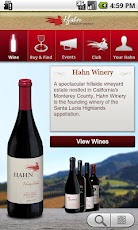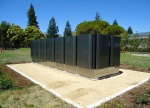 Trends Digest recently interviewed Fairmont Hotels to gain a glimmer of insight into how technology is evolving to improve the guest experience. We’re the first to tell you that Fairmont is at the top of our list for customer service and a fabulous guest experience. Fairmont also has workout gear waiting for you when you arrive to lighten up your packing load and keep you fit while you’re on the road. In fact, we are Fairmont fanatics. How cool is it when they remember your dog Fido’s name and his preferences too? Trends Digest recently caught up with Fairmont’s Mike Taylor to ask him about the future of technology at Fairmont.
Trends Digest recently interviewed Fairmont Hotels to gain a glimmer of insight into how technology is evolving to improve the guest experience. We’re the first to tell you that Fairmont is at the top of our list for customer service and a fabulous guest experience. Fairmont also has workout gear waiting for you when you arrive to lighten up your packing load and keep you fit while you’re on the road. In fact, we are Fairmont fanatics. How cool is it when they remember your dog Fido’s name and his preferences too? Trends Digest recently caught up with Fairmont’s Mike Taylor to ask him about the future of technology at Fairmont.
Trends Digest: Looking toward 2020, how do you anticipate technology changing the guest experience of the future?
Fairmont: From a guest perspective, the next two to three years will be about enhanced personalization and delivering a consistent customer experience to our guests around the world. We’ll look to achieve this by leveraging the internet and wireless technologies in-room and by making the television the “entertainment hub” for all online and technology needs. As Fairmont enters new international markets, language will also play a key role, so we’ll look to expand our multi-lingual capabilities for all of our online portals.
Trends Digest: What new technology applications are you looking at across the spectrum in creating an overall better guest experience?
Fairmont: As a luxury hotel group, we place great emphasis on providing engaging service that enhances the guest experience. In support of this, a good portion of our technology focus will be on supporting human resources, ensuring we have new generation tools on hand to hire the most talented individuals available. A new integrated, online recruitment platform is planned and will play a critical role in the area of talent acquisition.
Trends Digest: How are you thinking about technology applications in future hotels? Guest rooms?
Fairmont: What Fairmont guests expect in the way of technology today, in large part mirrors what they want from an overall stay experience perspective – an enhanced level of personal service, good value for their dollar, and a commitment to quality and service excellence that they can rely on.
Trends Digest: What new technology applications are you looking at across the spectrum in creating an overall better guest experience?
Fairmont: As a luxury hotel group, we place great emphasis on providing engaging service that enhances the guest experience. In support of this, a good portion of our technology focus will be on supporting human resources, ensuring we have new generation tools on hand to hire the most talented individuals available. A new integrated, online recruitment platform is planned and will play a critical role in the area of talent acquisition.
Trends Digest: How are you thinking about technology applications in future hotels? Guest rooms?
Fairmont: What Fairmont guests expect in the way of technology today, in large part mirrors what they want from an overall stay experience perspective – an enhanced level of personal service, good value for their dollar, and a commitment to quality and service excellence that they can rely on.
On the product front, a number of our hotels have piloted projects to bring the latest and greatest technology offerings to guests. At The Plaza in New York, an old world hotel that is one of the most legendary on the planet, the property recently introduced iPads in every guestroom. In San Francisco, the Fairmont has debuted a new media lounge called Intersect where travelers can play interactive games, listen to music, download photos or bond over spirited “Guitar Hero” and “Wii Golf” competitions.
Trends Digest: At Trends Digest, we picture the future holding more visual display phones, 3D and holographic applications, and advanced features that would expand entertainment for guest rooms and most importantly a better reach for business travelers who need to have the highest tech in-room office for web conferencing, etc. What new applications are you looking at?
Fairmont: From mobile and customized content to database capabilities and improving the speed of online transactions, we have a number of key technology topics on our radar. First and foremost though is the in-room guest experience. Our core focus from a technology standpoint will be to provide our guests with a seamless and integrated guestroom environment that is technology enabled and supports their business and personal needs.
Trends Digest: In terms of business trends, how have you seen traveler demographics change, and how do you view this equation changing as we move toward 2020?
Fairmont: Technology is an area that remains very fluid and ever-changing. A perfect example is in-room internet access. Less than a decade ago, Fairmont was the first hotel company to offer high-speed and wireless internet brand-wide. Now, seamless, secure, and fast connectivity is the norm in almost any hotel you visit around the globe. Change is inevitable, so our focus is on trying to identify and deliver technology that improves the guest experience, while also ensuring our core technology platform is competitive and aligned with Fairmont’s business strategy. Any new technology initiatives or investment in infrastructure will be measured against and/or driven by market trends, the needs of our guests, and the leading business priorities of the company.
TD
Copyright Trends Digest All Rights Reserved 2013





